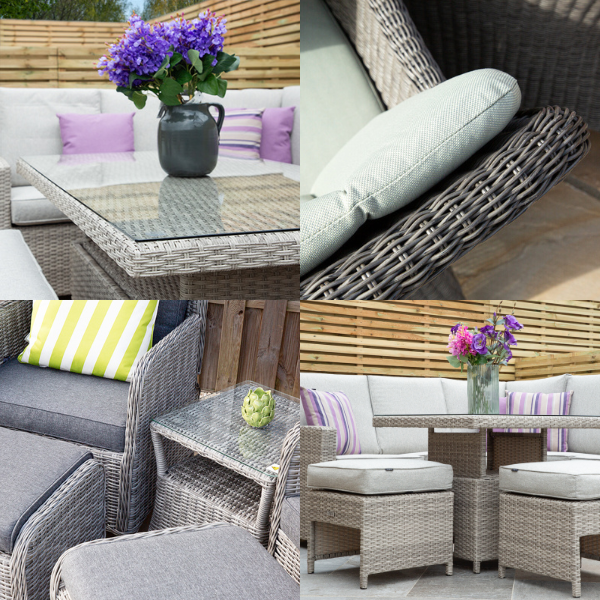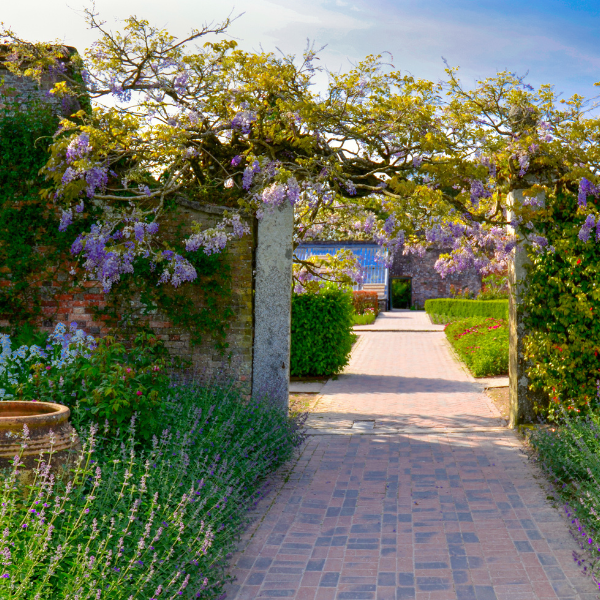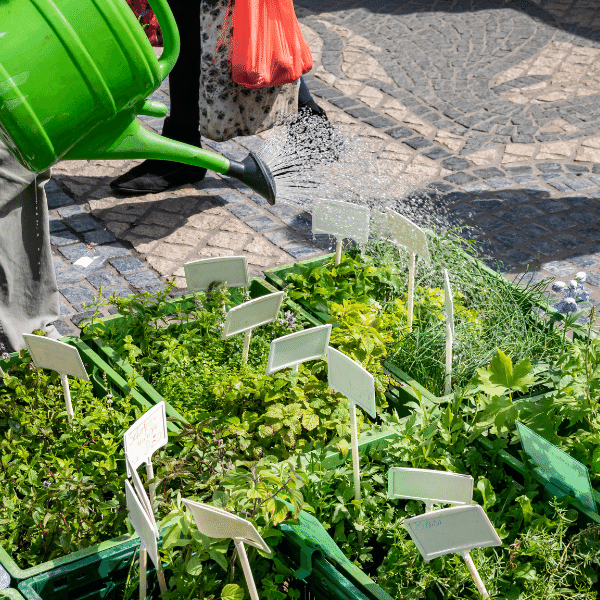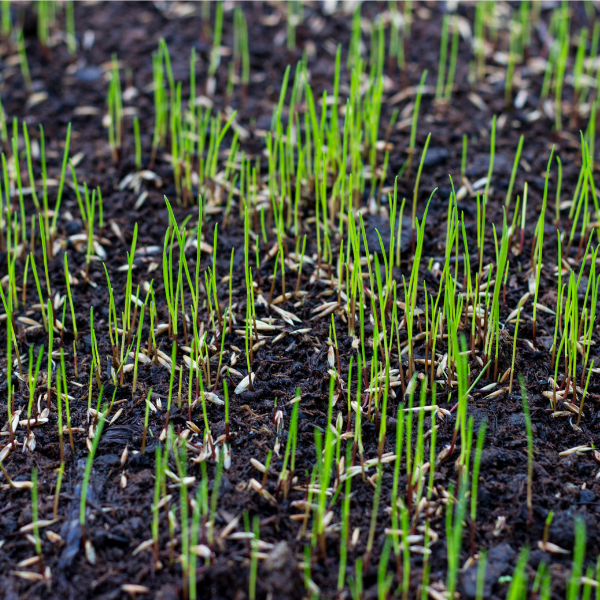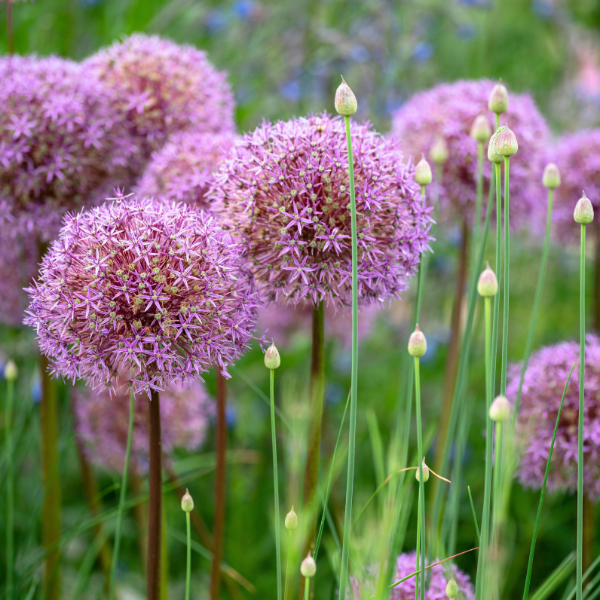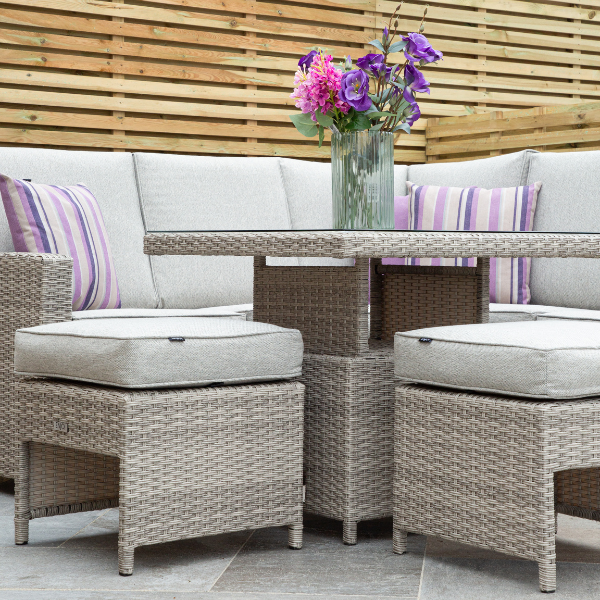Garden Landscaping Ideas

9 ways to optimize the garden space you have...
Our guide to garden landscaping serves as an excellent foundation for revamping your outdoor space, whether you're an experienced professional or a complete beginner. Designing a garden that is both aesthetically pleasing and fulfilling requires careful consideration, and those who have effectively landscaped a garden before can attest to this. If you've reached this point, chances are you're working on a garden in your permanent residence or, at the very least, in a place you currently happily call home. Below we will go through the 10 vital steps to take in order to transform your garden into the best outdoor living space, ready for it to become a joyful place you can entertain family and friends in the summer months.
1. Assess the area you have to transform
Understanding the space you're working with is a critical aspect that should be thoroughly addressed when crafting your garden design. The primary purpose of this phase in the garden landscaping process is to identify any potential issues, allowing you to plan your efforts and select materials accordingly. This proactive approach not only saves you time but also proves to be cost-effective in the long run.
Questions to ask yourself:
Is there any rubbish to get rid of?
Your initial priority should be to ensure that the space is free of any debris or obstacles that might hinder your vision for the garden. Clear the area of any clutter to provide a clear view, allowing you to identify and maximize the potential of different areas in the garden.
Ground conditions?
It's crucial to determine whether the ground where you plan to re-grass or install a patio is level or if it requires levelling. This consideration is vital, as you wouldn't want to lay new surfaces on an uneven base.
Any existing structures or features in place to remove/work with?
Consider the existing features in your garden and assess what needs to be retained, removed, or added. Elements such as decks, fencing, garden rooms, water features, and paths should be carefully evaluated. Determine whether you want to preserve and incorporate them into your new design or if a complete overhaul is necessary.

2. Decide if you want to do your own DIY garden or if you want to hire a landscaper
The crucial factor here is understanding your capabilities and financial budgets. Activities like planting, incorporating ready-made water features, adding a gravel path or lawn, installing decking, and replacing garden fencing are well-suited for enthusiastic amateurs. On the other hand, tasks such as building walls, laying expensive stone pavers, concrete rendering, and electrical work are best left to professionals to ensure a high-quality and safe outcome, even when dealing with a small plot. It's advisable to hire contractors affiliated with either the British Association of Landscape Industries (BALI) or the Association of Professional Landscapers (APL). Additionally, Checktrade is a reliable platform for identifying reputable garden landscapers based in the UK.
3. Plan for wet ground and control damp
Preparing the soil alone will enhance drainage, and in the case of patio paving installation, it will also aid in water dispersion. It's crucial to ensure that the topsoil level does not exceed the damp course of your home or other garden structures to prevent potential damp issues in interior spaces. The recommended top level is six inches below, including any additional materials such as gravel. If your land experiences waterlogging problems, the option of incorporating drains may need to be considered.
4. Select hard landscaping materials that will be long-lasting and stand testing weather conditions
Exploring and selecting potential materials constitutes one of the more enjoyable aspects of landscaping a garden. The choice of landscaping materials can significantly impact the overall project cost, so it's essential to be mindful of your selections. While prioritizing performance, durability, and ease of maintenance for all garden materials, opt for surfaces that have a natural appearance and complement the style of your home and design. Earthy greys, deep honey browns, and rustic dull reds are suitable for both period and modern houses.
For a seamless connection between indoor and outdoor spaces, consider using a material similar to that employed in the room adjacent to the garden, ensuring it is weatherproof. Alternatively, garden designers often keep things straightforward by limiting themselves to a maximum of four different materials.
Patio Paving:
Numerous options are available, ranging from the luxurious York stone to concrete imitations, brick, and granite.
Decking:
A suitable choice, particularly if wooden flooring is present inside the house, making it well-suited for contemporary homes. Timber, oak, and even teak are excellent materials for decking in a busy garden area due to their durability and stability, handling heavy footfall with ease. Periodic pressure washing is recommended to prevent algae and maintain a non-slip surface, ensuring your garden looks great for years.
Garden Gravel:
Ideal for both modern and period garden settings, gravel is versatile and can be used to border a patio, create themed spaces, or even lay a cost-effective gravel path.
Concrete Flooring:
Provides a contemporary finish and is an excellent way to achieve uniformity between the outside and inside of your home.
Granite Sets:
Make a strong visual impact and are durable, often used in driveway design for long-lasting results. They are particularly suitable for landscaping a front yard without plants.

6. Plan what you are going to plant
This marks the enjoyable phase of the project, and following this, the focus should shift to plants, trees, and shrubbery before incorporating any garden lawns. The selection of garden plants is influenced by personal preferences, climate, and the desired atmosphere for your outdoor space. Additionally, it hinges on the type of soil and the aspect of your garden. Typically, a blend of trees, flowers, and evergreen shrubs proves effective, ensuring year-round visual appeal and fostering an environment that attracts wildlife.
7. Consider your privacy
Ensuring privacy in your backyard is essential, as most people prefer not to be in the spotlight while tending to their roses or planting tomatoes. Consider privacy elements when shaping your garden landscape. Options like garden screening with trellises, DIY living walls, and strategically planted trees can contribute to a more secluded and protected environment. If you plan on lounging in a hammock or relaxing on a deck chair, erecting a larger structure like a pergola can effectively shield your space from prying eyes. Exploring creative and cost-effective fence ideas, incorporating colour pops, and other imaginative approaches can further enhance both privacy and the aesthetic appeal of your landscape.


8. Dress your landscape appropriately
You have the perfect garden but no plants as of yet? It's time to get excited about the digging, buying, and growing process! Watching your garden bloom is one of the longest yet most exciting times! This is the stage where you should begin finalising elements such as water features, ponds, and swimming pools, ensuring they are filled if necessary. It's also an opportune time to fill raised beds for vegetable planting and other purposes. At this time, you can sow seeds and prepare the ground for a lawn or lay turf if you desire one, allowing it to establish itself.
9. Borders!
It's time to neaten up your borders! Or, more precisely, once your grass has been established, you can trim it to achieve your desired shape and commence working on your lawn edges. If you don't have a lawn, then you can move on to addressing other decorative aspects of backyard design to meet all your outdoor space requirements.

 2,768 REVIEWS
2,768 REVIEWS
